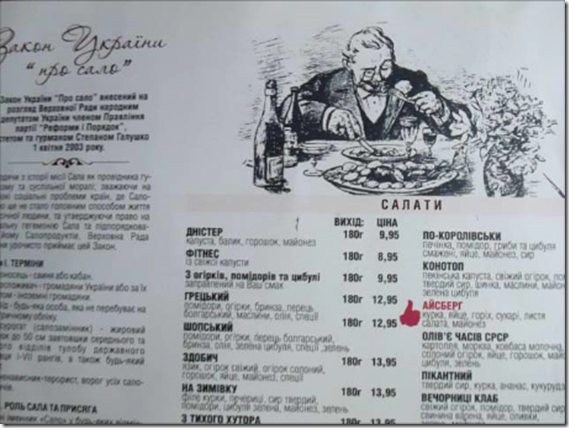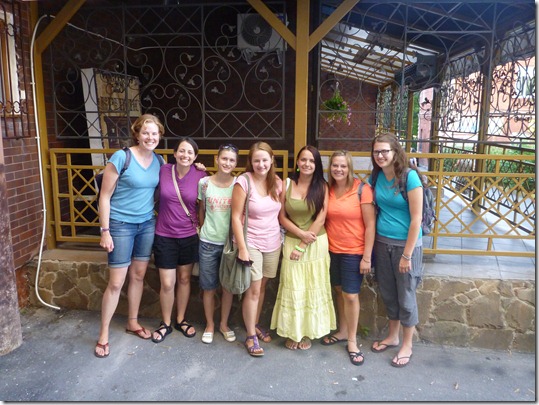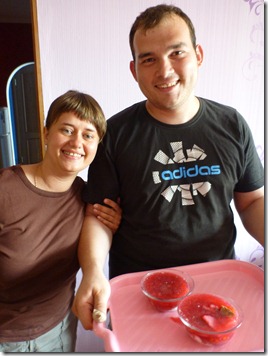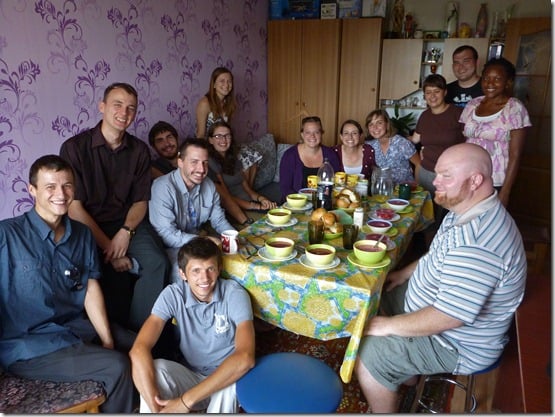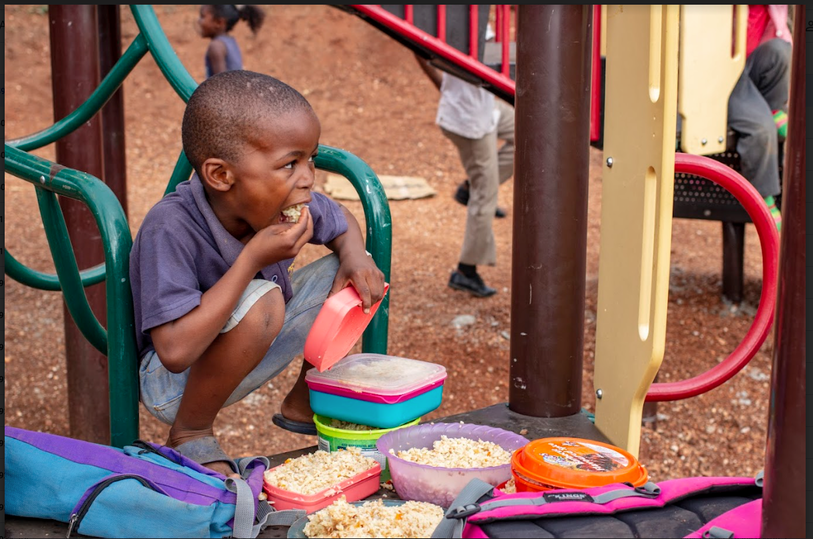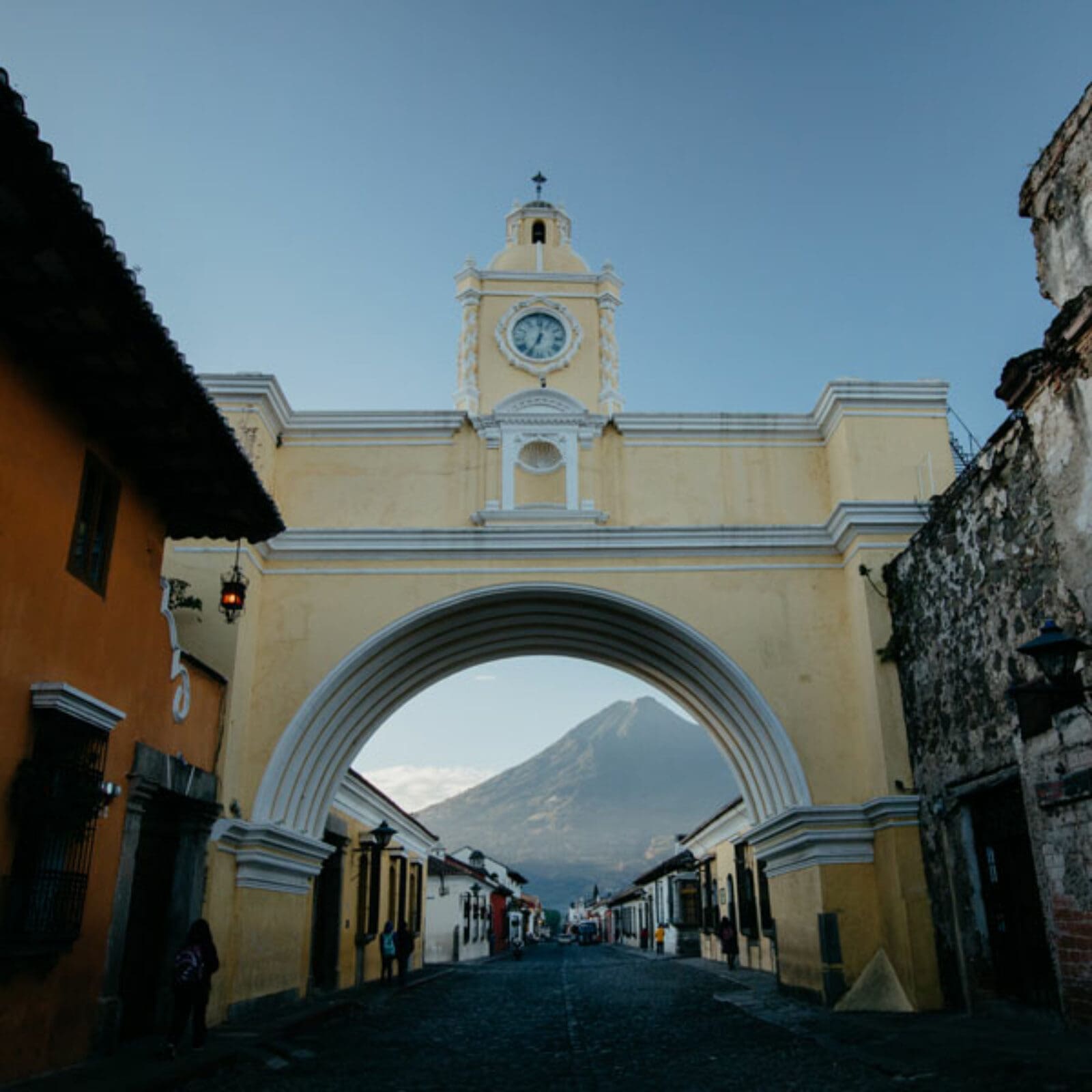When we stepped off the plane in Ukraine, it really started to feel like we were in a different country. Ireland was so similar to my home in Boston economically and socially that last month it was easy for me to forget that I wasn’t in the States. Ukraine is a whole nother world, though, and I think this is mainly due to the language. I’ve been in countries where I don’t speak the language, but it’s a whole different ballgame when the entire written alphabet is foreign. For example, on our second day here, we went to a restaurant, looked at the menu, and not only did we have absolutely no idea what was on the menu, but we also couldn’t sound out the words to order. It’s humbling when you need an interpreter to do things as simple as ordering food, because without one you can only stammer and point stupidly, hoping that you don’t end up with something like raw alligator eggs:
When you travel country to country, you begin to see how cultures compare to one another. From our stay thusfar in Ukraine, the one word I would use to describe Ukranians is “welcoming.” After our plane arrived in Kiev, Ukraine, we sat on a six-hour bus ride to Rivne, where we were welcomed by three of the most welcoming, kind-hearted people I’ve ever met. They spent hours with us over the next few days, showing us around the city, teaching us the Ukrainian language essentials (“Hello,” “Goodbye,” and of course “Where is the toilet?”) It seems like every word in Ukrainian has about a dozen syllables, and they patiently worked with us so that saying "thank you” sounded more like “dee-yaku-yoo” rather than “dracula.” They helped us with our cross-cultural assignment to talk with a local Ukrainian and learn about the way they think and act. If that wasn’t enough, they volunteered to help us maneuver the confusing Ukrainian bazaar (market) so our team could pick up some groceries.
I love tasting local cuisine, and one of the most well-known Ukrainian dishes is borsch. Borsch is essentially a meat and vegetable stew, and usually comes in either red or green. Our first Sunday after church, Tanya and her husband invited our team and others over to their home for local Ukranian cuisine. It was SUPER tasty, so I wanted to pass along the recipe for the delicious Ukranian Borsch and holubtsi that we so readily consumed. Yes, even you can eat like a Ukranian!
Ukrainian Borsch
This recipe makes one big pot of borsch, which will serve about eight people.
- 1 pound of meat (chicken, beef, or pork)
- 8-10 potatoes
- 3 middle-sized beets
- 1 large carrot (or two smaller carrots)
- 1 large onion
- 1 teaspoon salt
- 3 Tablespoons vinegar
- 1 bay leaf (optional)
- Cut the meat into small pieces, place in a large stock pot. Fill pot halfway with water, add salt, and boil for twenty minutes.
- Peel, slice, and cut the potatoes into bite-sized pieces. Add to the stock pot.
- Chop the beets, carrots, and onion into small pieces. In a separate frying pan, toss them with some water for about ten minutes until soft. Then add them to the pot with the bay leaf.
- Boil everything for about twenty to thirty minutes. Salt and pepper to taste and add a bit of vinegar. Great topped with a dollop of sour cream.
Ukranian Holubtsi (Cabbage Rolls)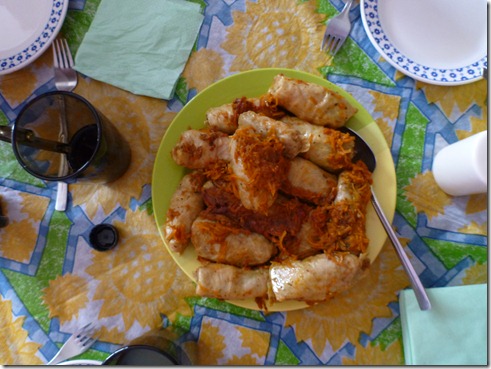
This recipe makes approximately sixteen holubtsi, which will serve about eight people. Ingredients:
- 1 mid-sized cabbage
- 4 cups cooked rice
- 1 onion
- 1 pound of meat (usually beef or pork)
- 2 big carrots
- 1 cup ketchup
- 1 cup water
- 2 Tbsp butter or oil
- Salt and pepper to taste
- In a frying pan, chop the onion and cook with the meat until browned. Add salt and pepper to taste. Combine with rice to form the stuffing.
- Place cabbage in a big stock pot, then fill with water until covered. Heat water on medium, until leaves peel easily off of the cabbage (take care not to heat cabbage too long)
- Fill individual cabbage leaves with the stuffing. Fold and pinch the ends of the rolls to close them securely.
- In a large stock pot, add butter or oil. Cover the bottom with any extra plain cabbage leaves (to prevent burning). Place a layer of holybsti on the bottom, then cover with grated carrots, pepper, and ketsup. Repeat, layering holybsti and vegetables until complete. Add 1 cup water, cover, and steam for two hours.

